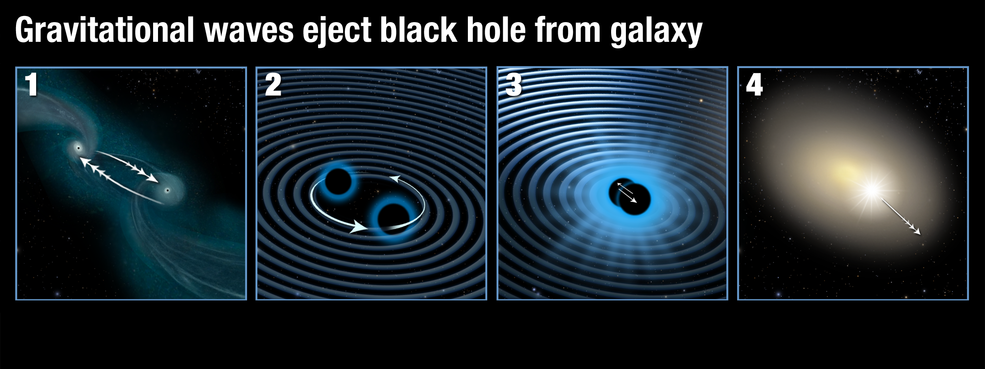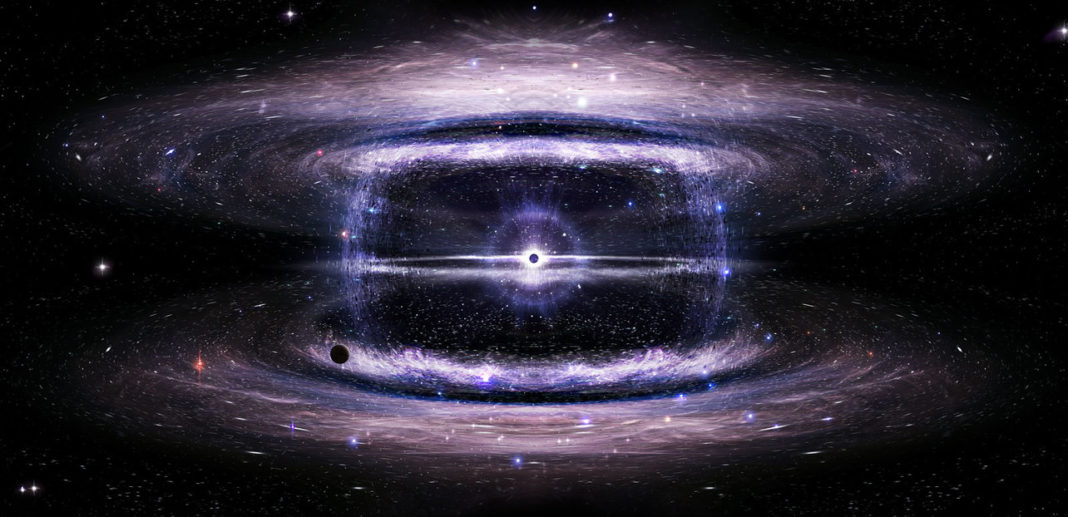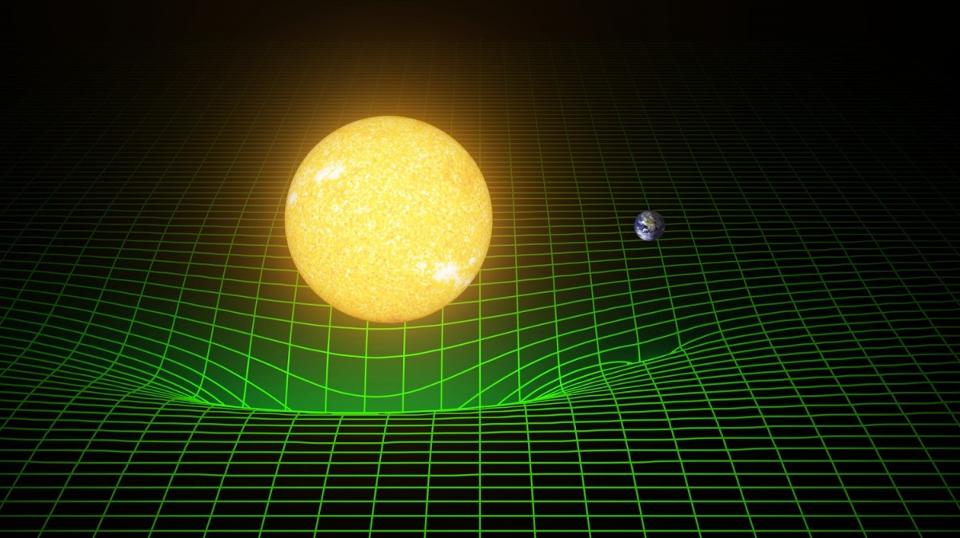A supermassive black hole has just been revealed by astronomers as it got propelled out of the galaxy by what experts believe to be the power of gravitational waves. While there are other banished black holes thought to be out there, none have yet been confirmed. This new discovery is thought to weigh more than 1 billion suns and is the biggest of its kind to ever be found booted out of its home galaxy.
There must have been quite some force behind the black hole when it was kicked out of the galaxy. Experts suggest that it was in fact pushed by the force of gravitational waves that had been unleashed by the merging of two black holes in the center of the original galaxy. Gravitational waves are ripples in space that are created when two massive objects collide and are a phenomenon that was first considered by Albert Einstein. Last year astronomers were able to prove gravitational waves existed through the use of the Laser Interferometer Gravitational-Wave Observatory (LIGO).

Credits: NASA, ESA, and A. Feild (STScI)
These observations surprised the researchers and team leader Marco Chiaberge of the Space Telescope Science Institute (STScI) and John Hopkins University, said, “When I first saw this, I thought we were seeing something very peculiar. When we combined observations from Hubble, the Chandra X-ray Observatory, and the Sloan Digital Sky Survey, it all pointed towards the same scenario. The amount of data we collected, from X-rays to ultraviolet to near-infrared light, is definitely larger than for any of the other candidate rogue black holes.” The Hubble was the first to give a clue that something wasn’t quite normal with the galaxy when it revealed images of a bright quasar residing far from the galaxy’s core. This quasar is situated in a galaxy cluster that’s around 8 billion light years away and is called 3C 186.
Chiaberge explained, “I was anticipating seeing a lot of merging galaxies, and I was expecting to see messy host galaxies around the quasars, but I wasn’t really expecting to see a quasar that was clearly offset from the core of a regularly shaped galaxy. Black holes reside in the center of galaxies, so it’s unusual to see a quasar, not in the center.” During their research, the team discovered the black hole had traveled more than 35,000 light years from the center. Team member Justin Ely of STScI said, “To our surprise, we discovered that the gas around the black hole was flying away from the galaxy’s center at 4.7 million miles an hour.”
An image produced the Hubble provided one essential clue as to the location of the black hole. The galaxy itself has features called tidal tails which suggest there is a possible union between this and another galaxy, each with massive black holes, may have previously merged. Based on the researcher’s theory, when two galaxies merge their black holes become settled in the center of the galaxy. If these black holes have a different mass and rotation rate to one another gravitational waves are emitted that are more strong in one particular direction. Gravitational waves stop being produced when the two black holes collide. The newly merged black hole recoils away from the strongest gravitational wave and flies off into space. Moving forward the team is hoping to more accurately measure the speed of the black hole and it’s gas disk and hopefully provide a deeper understanding of the nature of this phenomenon.
More News to Read











